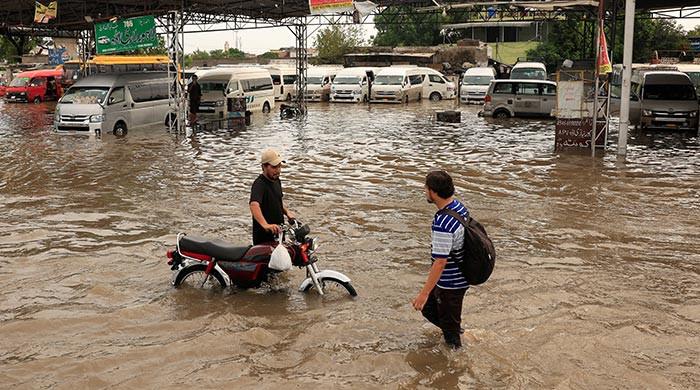Record Rainfall Causes Severe Flooding in Sialkot
Sialkot experienced extreme rainfall that surpassed a 49-year high, resulting in widespread flooding and displacement of residents.
The Pakistan Meteorological Department (PMD) reported that the city received 363.5mm of rain in a 24-hour period, the most substantial rainfall since 1976.
The PMD stated via X that the record was broken, emphasizing that further rainfall was expected following prior forecasts for May and August. The previous record was on August 6, 1976, with 339.7mm of rainfall.
The situation escalated after India discharged water into the Ravi, Chenab, and Sutlej rivers, leading to flooding in adjacent areas. Extensive damage was reported to villages, agricultural land, and crops, leading to mass evacuations.
The military has been deployed to assist with rescue efforts in Lahore, Kasur, Sialkot, Faisalabad, Narowal, and Okara.
At Kartarpur, floodwaters inundated the project management unit, stranding more than 100 workers. Breaches were implemented in Mandi Bahauddin and Alipur Chattha to redirect the flow of the Chenab River.
Authorities indicated that water levels in the Ravi River reached levels unseen since 1955 at Jassar and since 1988 at Shahdara.
Sialkot was quickly overwhelmed by the intense rainfall. At Head Marala, the Chenab River’s water level surged to 902,224 cusecs, approaching its 1.1 million cusecs capacity. This prompted the local government to request support from the military.
Deputy Commissioner Saba Asghar declared a district-wide state of emergency and enforced Section 144, prohibiting public access to rivers, streams, and bridges.
The rainfall, which totaled 405mm in 12 hours, caused significant flooding in streets and residential areas, infiltrating homes, businesses, and government buildings.
Nullah Aik, designed for a capacity of 25,000 cusecs, overflowed when it received 46,950 cusecs of water, exacerbating the flooding. Many areas experienced power outages, while internet and mobile services faced considerable interruptions.
Substantial areas of Rangpura, Nikka Pura, Shahab Pura, Defence Road, and Kareem Pura are submerged under several feet of water.
Roads are impassable, and boats are being utilized to rescue families. Approximately 85 villages in the Tawi belt have been isolated. Despite the flooding and restrictions, people gathered along the banks of Nullah Bhed to observe the rising water levels.



Comments (0)
No comments yet. Be the first to comment!
Leave a Comment